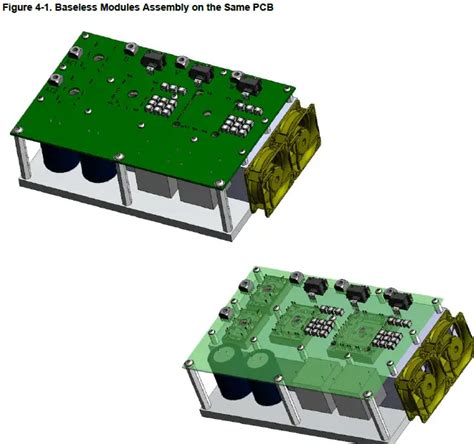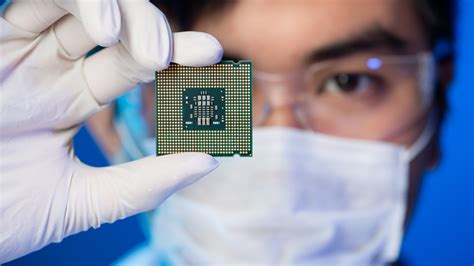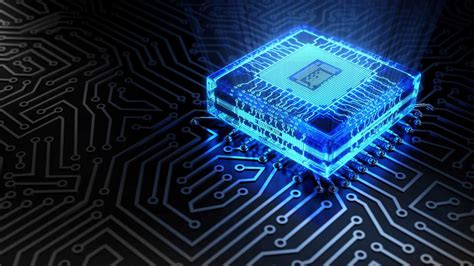Microchip Mounting Systems: A Comprehensive Guide to Precision Placement
In the realm of electronics manufacturing, the microchip mounting system stands as a critical component, ensuring the precise placement and reliable connection of microchips onto printed circuit boards (PCBs). These miniature electronic circuits are the brains of countless devices, from smartphones to medical equipment, and their proper mounting is paramount to optimal device performance and longevity.
Understanding the Microchip Mounting Process
The microchip mounting process involves adhering the microchip to the PCB surface while simultaneously establishing electrical connections between the microchip's terminals and the PCB's conductive traces. This delicate operation requires a specialized system capable of handling the microchips and PCBs with precision and dexterity.
Types of Microchip Mounting Systems
A diverse range of microchip mounting systems exist, each tailored to specific applications and production volumes. Some of the most common types include:
1. Manual Mounting

- Manual mounting involves placing and securing microchips onto PCBs by hand, using tools such as tweezers and solder paste.
- This method is suitable for small-scale prototyping and low-volume production.
2. Automated Surface Mount Technology (SMT)

- SMT is a highly automated process that utilizes pick-and-place machines to mount microchips onto PCBs.
- SMT allows for high-speed placement of multiple microchips simultaneously, making it suitable for large-scale manufacturing.
3. Ball Grid Array (BGA)
- BGA is a specialized mounting technique that utilizes a grid of solder balls to connect the microchip to the PCB.
- BGA offers high-density connections and is often used for high-performance applications.
4. Flip Chip

- Flip chip mounting involves directly connecting the microchip's terminals to the PCB's traces without using solder.
- Flip chip provides superior electrical performance but requires specialized equipment and processes.
Factors to Consider when Choosing a System
Selecting the appropriate microchip mounting system requires careful consideration of several factors:
-
Production Volume: Manual mounting is suitable for prototypes and low-volume production, while automated SMT is ideal for high-volume manufacturing.
-
Microchip Size and Complexity: The size and complexity of the microchips being mounted will influence the required level of precision and equipment capabilities.
-
PCB Type: The type of PCB material and layout will impact the mounting method and equipment requirements.
-
Environmental Considerations: Some applications may require specialized mounting systems designed for harsh environments, such as high temperatures or vibrations.
A Closer Look at Automated SMT Systems
Automated SMT systems are the workhorses of the electronics manufacturing industry, providing high-speed and precision microchip mounting for large-scale production. These systems typically consist of the following components:
1. Pick-and-Place Machine:
- The pick-and-place machine is responsible for precisely picking up individual microchips and placing them onto the PCB.
- Advanced pick-and-place machines can handle a wide range of microchip sizes and configurations.
2. Solder Paste Dispenser:
- The solder paste dispenser applies a precise amount of solder paste to the contact points on the PCB.
- Solder paste serves as the adhesive that bonds the microchip to the PCB and establishes electrical connections.
3. Reflow Oven:
- The reflow oven heats the PCB and solder paste to a temperature that melts the solder and permanently bonds the microchip to the PCB.
- Temperature profiles are carefully controlled to ensure reliable solder joints.
Challenges and Solutions in Microchip Mounting
Despite the advancements in microchip mounting technology, manufacturers face several challenges:

1. Component Miniaturization:
- The rapid miniaturization of microchips increases the difficulty of handling and placing them precisely.
- Advanced equipment and techniques are required to handle these delicate components.
2. Thermal Management:
- The high heat generated during reflow soldering can damage microchips and PCBs.
- Thermal management strategies, such as controlled temperature profiles and cooling systems, are essential to prevent thermal damage.
3. Quality Control:
- Ensuring the reliability and quality of microchip mounting is crucial for device performance.
- Automated optical inspection (AOI) systems and other advanced testing methods are used to detect and correct any mounting defects.
The Future of Microchip Mounting
The microchip mounting industry is continuously evolving to meet the demands of the ever-advancing electronics sector. Emerging trends include:
1. Smart Manufacturing:
- The integration of artificial intelligence (AI) and machine learning (ML) into microchip mounting systems enables real-time process optimization and quality control.
- Smart manufacturing systems can self-adjust parameters and detect potential issues before they occur.
2. Automated Optical Inspection (AOI)
- AOI systems are becoming increasingly advanced, utilizing high-resolution cameras and machine vision algorithms to detect subtle mounting defects.
- AOI systems can significantly improve quality control and reduce the risk of defective products.
3. Sustainable Manufacturing:
- The electronics manufacturing industry is adopting sustainable practices, including reducing waste and energy consumption.
- Eco-friendly microchip mounting systems and materials are being developed to minimize environmental impact.
Real-World Applications and Case Studies
The microchip mounting system finds countless applications across diverse industries, including:
-
Automotive Electronics: Precisely mounted microchips control various automotive systems, such as engine management, braking, and infotainment.
-
Medical Devices: Microchip-based medical devices provide life-saving therapies and monitoring systems.
-
Consumer Electronics: Smartphones, tablets, and other consumer devices rely on microchips for processing, communication, and entertainment.
-
Industrial Automation: Microchips control and monitor machinery in factories and other industrial settings.
Case Study: Apple's iPhone Production
- Apple's iPhone production line utilizes advanced SMT systems to precisely mount microchips onto the PCBs.
- These systems enable Apple to produce high volumes of iPhones with consistent quality and reliability.
Case Study: Tesla's Electric Vehicle Systems
- Tesla's electric vehicles rely heavily on microchips for motor control, battery management, and autonomous driving functions.
- Tesla utilizes sophisticated microchip mounting systems to ensure the precision and reliability of these critical systems.
Case Study: Philips Healthcare's Imaging Systems
- Philips Healthcare's medical imaging systems use high-performance microchips to process and display medical images.
- Philips employs specialized microchip mounting systems to ensure the accuracy and reliability of these systems, which are essential for medical diagnoses.
Step-by-Step Approach to Microchip Mounting
1. PCB Preparation:
- The PCB is cleaned and prepared with solder paste.
- Solder paste is applied to the contact points on the PCB where the microchips will be mounted.
2. Microchip Placement:
- The pick-and-place machine picks up the microchips and places them precisely onto the solder paste.
- The placement accuracy is critical to ensure proper electrical connections.
3. Reflow Soldering:
- The PCB is heated in a reflow oven to melt the solder paste and permanently bond the microchips to the PCB.
- Temperature and time profiles are carefully controlled to achieve optimal solder joints.
4. Inspection and Testing:
- After reflow soldering, the PCB undergoes automated optical inspection (AOI) and other testing procedures.
- These tests detect and correct any mounting defects or electrical faults.
Table 1: Microchip Mounting Systems and Their Key Features
| System Type |
Advantages |
Disadvantages |
| Manual Mounting |
Low cost, flexible |
Slow, labor-intensive |
| Automated SMT |
High speed, precision |
High equipment cost |
| BGA |
High-density connections, thermal efficiency |
Difficult to repair, requires specialized equipment |
| Flip Chip |
Excellent electrical performance |
High cost, complex fabrication |
Table 2: Factors to Consider When Choosing a Microchip Mounting System
| Factor |
Considerations |
| Production Volume |
Manual for low volume, SMT for high volume |
| Microchip Size and Complexity |
Smaller chips require more precision |
| PCB Type |
Material and layout impact mounting method |
| Environmental Considerations |
Harsh environments require specialized systems |
Table 3: Advantages and Disadvantages of Different Microchip Mounting Methods
| Method |
Advantages |
Disadvantages |
| SMT |
High speed, precision, cost-effective for large volumes |
Not suitable for small-scale production |
| BGA |
High-density connections, thermal efficiency |
Difficult to repair, requires specialized equipment |
| Flip Chip |
Excellent electrical performance |
High cost, complex fabrication |
Conclusion
The microchip mounting system plays a vital role in the manufacturing process of electronic devices. By precisely and reliably placing microchips onto PCBs, these systems enable the creation of complex and sophisticated electronic products. The choice of microchip mounting system depends on factors such as production volume, microchip size and complexity, PCB type, and environmental considerations. Manufacturers must carefully evaluate these factors to select the most suitable system for their specific needs.
As technology advances, microchip mounting systems continue to evolve, offering improved precision, speed, and efficiency. The integration of AI, ML, and automated optical inspection systems is further enhancing quality control and production optimization. This ongoing evolution ensures that the microchip mounting system remains a critical technology in the production of the world's most advanced electronic devices.

